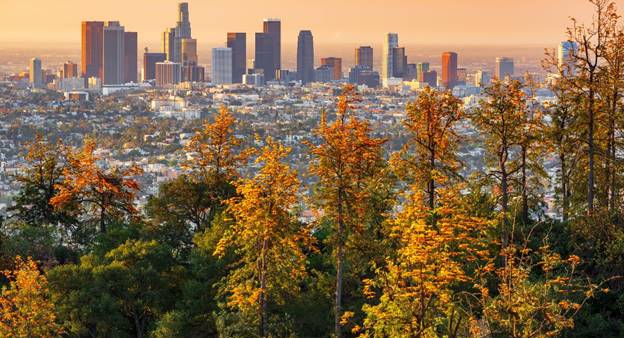
Los Angeles will consider a series of proposed cuts this week as the city faces a $469 million deficit this year, jeopardizing the city's already ailing parks system - Español
Local Parks on the Chopping Block at Los Angeles City Hall
By Miriam Bar-Zemer
Park advocates are sounding an alarm about the dire state of city parks in Los Angeles. The crisis in local parks is worsening amidst ongoing maintenance delays, existing money that is drying up, and threatened budget cuts.
The city’s Department of Recreation and Parks agrees and points to another serious problem: vandals have been damaging park properties, making conditions even worse and repairs nearly impossible.
Proposed budget cuts and staffing reductions, if passed, would cut to the core of the department’s operations and maintenance of city parks and threaten the safety and well-being of park visitors, said Cathie Santo-Domingo, assistant general manager of the Department of Recreation and Parks.
The city of Los Angeles faces a $469 million deficit this year, including $289 million in unexpected expenses and a $180 million shortfall in revenue. Mayor Karen Bass has proposed eliminating 2,000 positions in city departments, including 300 full-time positions in the parks department, and reducing its budget for part-time positions by $10 million. Many of the proposed cuts will affect operations and maintenance.
“If those positions are deleted, how do we maintain our parks?” said Santo-Domingo. “It’s very worrisome.”
The goal of the department is to keep parks clean and safe, she added. “But the challenges that our maintenance staff are facing, it’s nothing that I’ve seen,” she said. “It’s so rough now.”
Parks are repeatedly vandalized to the point where they cannot be fixed in a day, Santo-Domingo said. Instead, they get added to the department’s growing list of deferred maintenance projects, which already totals $2.1 billion.
“When you factor in the cost of labor expenses and ongoing maintenance costs, it would take the department 60 years to catch up on past-due work, much less think about creating any new parks in communities that badly need them,” said Jon Christensen, adjunct assistant professor in the Institute of the Environment and Sustainability at UCLA.
The city is also due to lose an additional $4 million a year from park funds provided by Proposition K, a bond that expires in 2026. And last year voters rejected a hastily conceived ballot measure proposed by the city council to replace that funding with a revenue stream that would have generated $227 million a year.
“We’re in emergency mode right now,” said Alfredo Gonzalez, director of environmental equity and justice at Resources Legacy Fund, a philanthropic nonprofit that supports community-based organizations working on renovating and building parks in underserved communities in Los Angeles. “We have to replace that revenue stream and finance parks in a way that doesn’t lead to this boom and bust. And we need to invest in the places where there is a higher need for parks.”
Gonzalez said that Los Angeles County went through a similar experience when a local revenue stream that funded parks expired, and voters rejected a first proposal from county supervisors to replace that funding. A diverse coalition of community-based organizations then banded together with the county parks department to conduct a needs assessment and crafted a new equity-centered proposal on the ballot, Measure A in 2016, that detailed how the money would be spent and prioritized areas of high need. It garnered support from 75% of voters and now generates close to $90 million a year.
“We’ve been down this road before,” said Gonzalez. He added that some of the groups involved in advocating for Measure A at the county level are now discussing how to pass a similar measure in the city of Los Angeles.
Irma Muñoz, executive director of Mujeres de la Tierra, worries that the city is never going to have enough money for parks when budgets are being cut. She said that community members need to take care of their parks.
“I think what we can do is inspire the people who live near and around a park, that use the park, to lead and own it,” Muñoz said. “When they get to determine what trees get planted, what resources they have in the park, then it becomes their park as opposed to the city’s park.”
“In budget crises,” Christensen said, “parks are often thought of as nice to have rather than essential for the health and well-being of communities, families and children, neighborhoods.”
That needs to change, said Gonzalez. “Our public officials need to recognize that parks are essential infrastructure like hospitals, like educational facilities, like highways and roads,” he said, “which is not the case now.”
(This story was produced by Ethnic Media Services in collaboration with the Laboratory for Environmental Narrative Strategies (LENS) at UCLA as part of the Greening American Cities initiative supported by the Bezos Earth Fund.)

